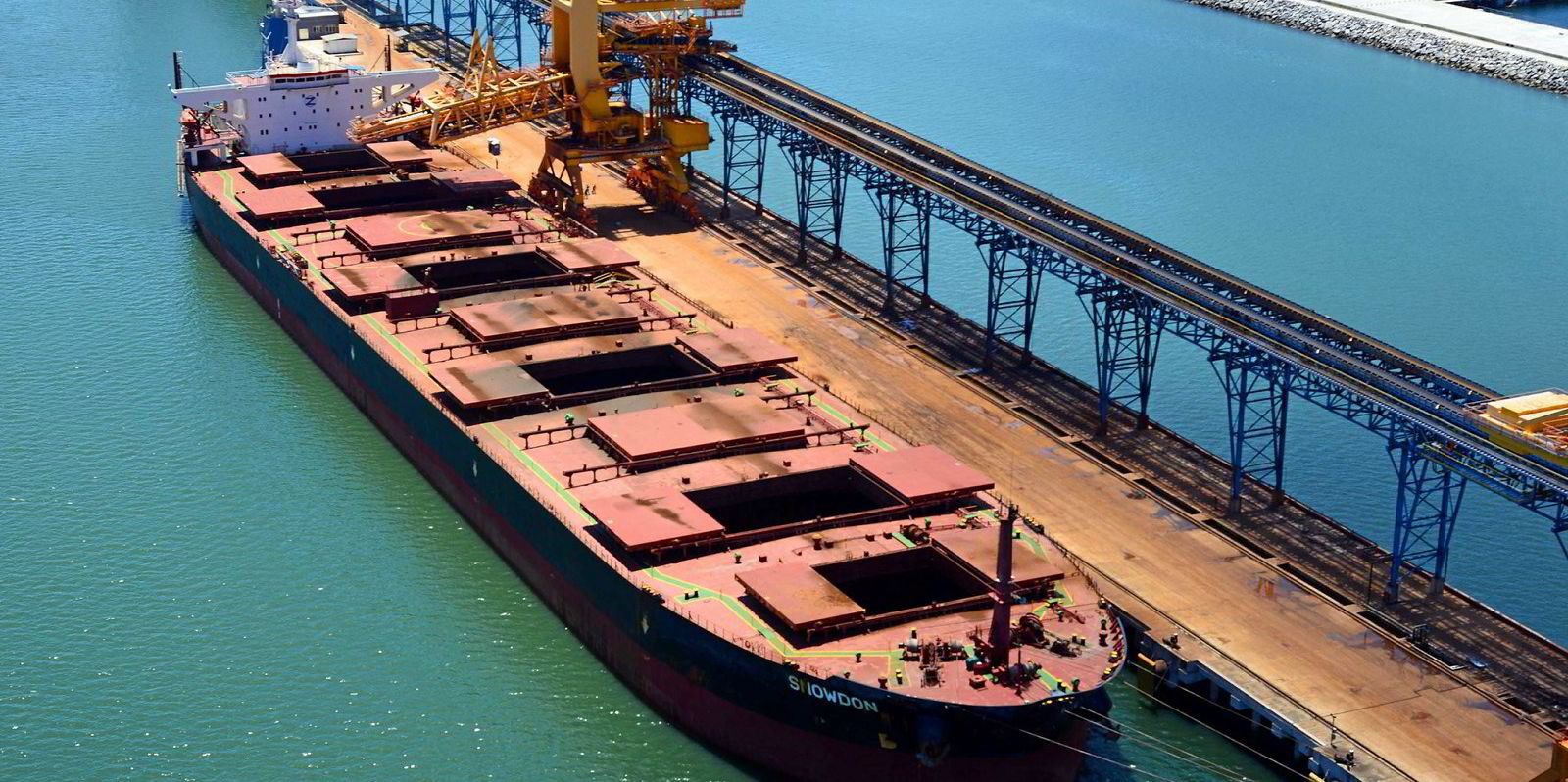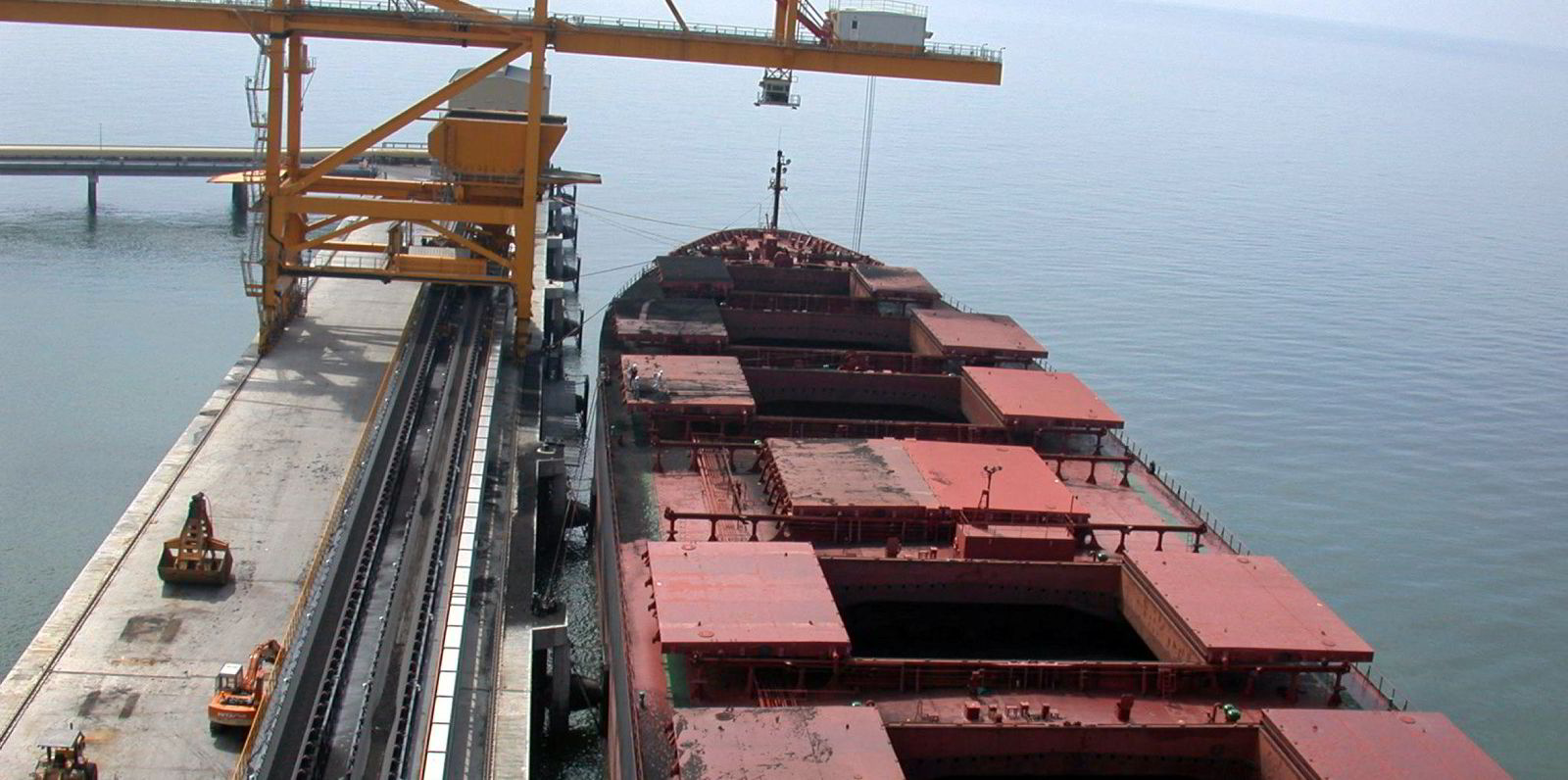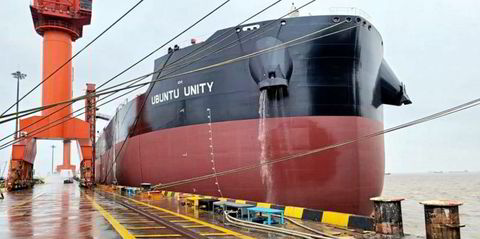The dry bulk market continued to slide on Tuesday as a result of weak owner sentiment, while the week’s festivities at Posidonia 2022 gave a sense of better days ahead for the sector, market sources said.
Bulker spot rates have been falling since late May as China’s zero-Covid policy stunned its economy, but hope is in the Athens air as China’s businesses start reopening, according to dry-bulk ETF trader Breakwave Advisors.
“Sentiment drives shipping, and as the bi-annual Posidonia gathering is in full force, we feel the positivity all around us,” the New York-based firm said on Tuesday in a report on dry bulk shipping.
“A resurgence of iron ore demand out of China could propel rates to very high levels.”
The Baltic Exchange’s capesize 5TC, a spot-rate average across five key routes, has dropped 42% since 23 May to $22,128 per day on Tuesday.
Australian miner Rio Tinto hired two capesizes on Tuesday to carry 170,000 tonnes of ore each from Dampier, Australia to Qingdao, China.
An unnamed vessel will do the job at $12.85 per tonne, while the 176,000-dwt Great Jin (built 2010) will do it for $12.95 per tonne.
The ships will get loaded from 20 to 23 June.
On Monday, Fortescue Metals Group fixed an unnamed capesize to send 160,000 tonnes of ore from Port Hedland, Australia to Qingdao at $12.93 per tonne. Loading is set for 19 and 20 June.
Iron-ore prices have risen steadily over the past week to almost $145 per tonne, according to the New York Mercantile Exchange, as China’s major cities start reopening factories, offices and restaurants.
But the dry bulk market could remain volatile for the rest of the year as port congestion and the conflict in Ukraine continue to disrupt global trade, Breakwave Advisors added.
“The current state of dry bulk shipping is the most interesting in years,” it said.
China’s weakened economy, which is in its worst state since the global financial crisis, is of utmost concern to shipping because it demands the greatest amount of commodities.
“For dry bulk, China remains the most important region, and for the current strength in dry bulk shipping to be maintained into next year the Chinese economy needs to rebound soon,” Breakwave Advisors said.
“There has been a series of announcements focusing on stimulating the economy over the past several weeks, but we have yet to see any effect on the real economy.”
The paper market indicated the uncertainty on Tuesday as the front-month forward freight agreement rate declined 9.5% to $31,479 per day.

But a potential rebound could be steep, driven by tight supply and strong owner sentiment, and possibly send spot rates for dry bulk shipping, to very high levels, Breakwave Advisors said.
“We anticipate government actions as it relates to energy security combined with geopolitical developments to drive the flows of commodities transported by dry bulk, and thus, indirectly determine the path of freight rates.”
Breakwave Advisors warned, however, that owners and charterers should also be leery of spot rates for smaller bulkers that have also been trending downward.
“Although this is not yet concerning, it could potentially snowball into something more serious as we enter the summer months,” the report said.
The panamax 5TC has dropped 16.6% since 23 May to $25,339 per day on Tuesday, while the supramax 10TC fell 6.6% to $28,948 per day.
“There was slightly more activity today, however, with a lot of the market seemingly in Posidonia the market did remain quiet with few fixtures reported,” Baltic Exchange analysts wrote on Tuesday in their daily take on the dry bulk market.







